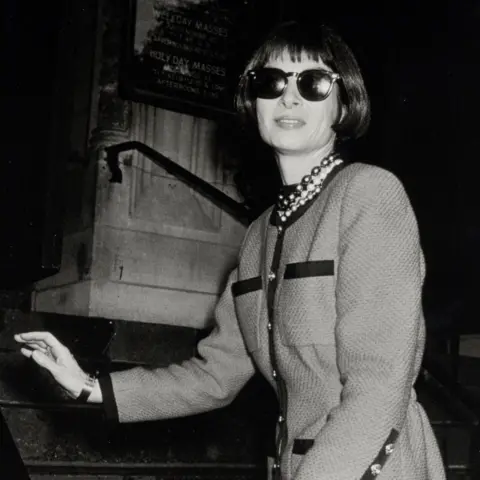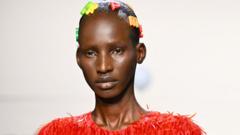In the landscape of high fashion, a striking transition has emerged, as designers opt for slender models, putting the body positivity movement in the background. The 2010s served as a high point for body acceptance, celebrating all body types, but recent reports suggest a return to less inclusive practices, potentially marking body positivity as a transitory phase.
Historically, the body positivity initiative gained momentum in the 1960s, bolstered by cultural icons challenging the narrow beauty ideals. The movement surged again in the 2010s, spearheaded by social media platforms and influencers advocating for diverse representations in fashion. Notably, the Kardashians became emblematic of this change, popularizing curves and augmenting the demand for inclusive representation.
However, as of 2024, statistics indicate a sharp decline in the visibility of plus-sized models within the fashion industry, with reports revealing only 0.8% representation during major fashion weeks. The rising usage of weight-loss drugs, including Ozempic, has influenced perceptions of beauty, prompting some models to voice their fears of falling behind industry standards.
Industry insiders report on this shift, expressing concern over the implications of returning to narrower beauty ideals. This sentiment was echoed by figures from major fashion publications, noting the sway that medications have on current beauty narratives. For many models, the resurgence of skinny as an ideal translates to increased job opportunities but heightened pressure to conform to slim aesthetics.
Critics highlight that while some brands maintain a commitment to inclusivity, many are now resorting to superficial measures to project an image of diversity. Chloe Jeffrey, a designer, champions true inclusivity over mere tokenism, voicing a commitment to celebrating various body shapes and backgrounds in his designs, particularly inspired by queer culture.
Despite isolating trends presenting a step backward for body positivity, some advocates believe that consumer preferences could directly influence a return to inclusivity. With the cyclical nature of fashion, a collective call for change could spur a renaissance in diverse representation, allowing the body positivity movement to gain traction once again.
The current narrative in fashion underscores the critical dialogue around body ideals, posing questions about evolving perceptions of beauty. While the pendulum appears to have swung back to slimness, history suggests that change is always within reach, provided the industry responds to the desires of the consumers it serves.
Historically, the body positivity initiative gained momentum in the 1960s, bolstered by cultural icons challenging the narrow beauty ideals. The movement surged again in the 2010s, spearheaded by social media platforms and influencers advocating for diverse representations in fashion. Notably, the Kardashians became emblematic of this change, popularizing curves and augmenting the demand for inclusive representation.
However, as of 2024, statistics indicate a sharp decline in the visibility of plus-sized models within the fashion industry, with reports revealing only 0.8% representation during major fashion weeks. The rising usage of weight-loss drugs, including Ozempic, has influenced perceptions of beauty, prompting some models to voice their fears of falling behind industry standards.
Industry insiders report on this shift, expressing concern over the implications of returning to narrower beauty ideals. This sentiment was echoed by figures from major fashion publications, noting the sway that medications have on current beauty narratives. For many models, the resurgence of skinny as an ideal translates to increased job opportunities but heightened pressure to conform to slim aesthetics.
Critics highlight that while some brands maintain a commitment to inclusivity, many are now resorting to superficial measures to project an image of diversity. Chloe Jeffrey, a designer, champions true inclusivity over mere tokenism, voicing a commitment to celebrating various body shapes and backgrounds in his designs, particularly inspired by queer culture.
Despite isolating trends presenting a step backward for body positivity, some advocates believe that consumer preferences could directly influence a return to inclusivity. With the cyclical nature of fashion, a collective call for change could spur a renaissance in diverse representation, allowing the body positivity movement to gain traction once again.
The current narrative in fashion underscores the critical dialogue around body ideals, posing questions about evolving perceptions of beauty. While the pendulum appears to have swung back to slimness, history suggests that change is always within reach, provided the industry responds to the desires of the consumers it serves.



















